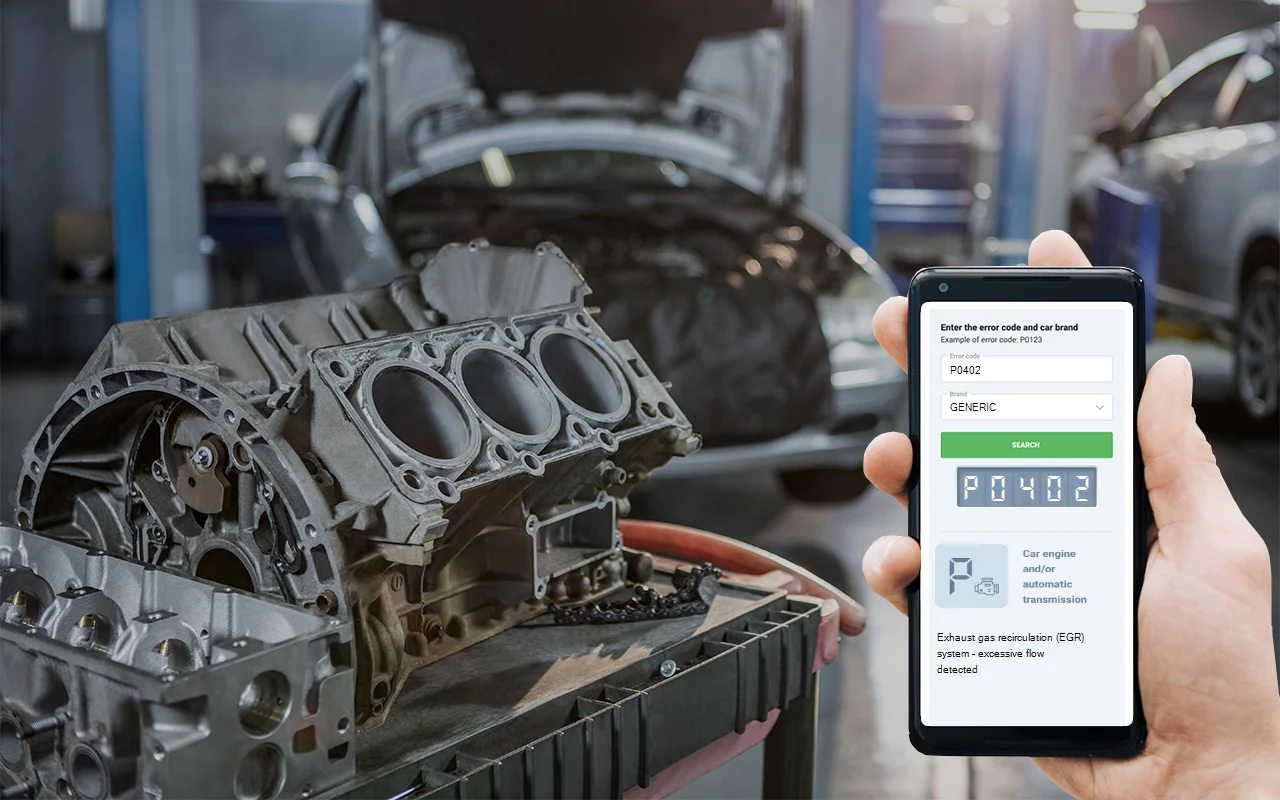When you see a p0402 code pop up, your car’s computer is basically telling you there’s too much exhaust gas recirculation (EGR) happening. Over the years, I’ve seen this system trip people up. Here’s the deal: your EGR setup is supposed to send just the right amount of exhaust back into the intake-lowers combustion temps, cuts down on nasty nitrogen oxides, and helps your engine run cleaner. But when things get out of whack and that flow’s higher than it should be, the computer throws a fit, lights up your dash, and stores P0402. Most rides today rely on sensors like the DPFE to keep tabs on EGR flow. If you’ve got a sticky EGR valve or a sensor on the fritz, you’re likely looking at too much exhaust sneaking in, and that’s exactly what trips the code.
DTC P0402
Common Causes of P0402
In my experience, there’s a handful of usual suspects when it comes to P0402. Here’s what tends to show up on my workbench:
- Differential pressure sensors acting up-especially on Fords with those finicky DPFE units
- Carbon gunk choking up the EGR passages, throwing off flow measurements
- EGR valves sticking open or refusing to close all the way
- Vacuum leaks not letting the EGR valve do its job
- Electrical gremlins-broken wires, corroded plugs, or bad connections in the EGR circuit
- Every now and then, the PCM itself needs a software update to play nice
Most of the time, it’s one of these. But don’t just toss parts at the problem-always run a full check first. I’ve seen this code on Fords, BMWs, Mazdas, so keep your eyes open regardless of the badge on your hood.
Recognizing Symptoms of P0402 Engine Code
If you’re dealing with a P0402, first thing you’ll notice is that dreaded check engine light staring at you. That’s just the beginning. In my shop, folks often complain about rough or jumpy idle, sudden stalling at stoplights, and sometimes the engine surges or feels like it’s fighting itself. Worst case, your car won’t fire up at all. These issues make driving a headache, and ignoring them never makes things better. I’ve seen dtc p0402 bmw and dtc p0402 mazda throw up the same red flags, so if you notice those symptoms, don’t wait around hoping they’ll fix themselves.

How to Diagnose OBD Code P0402
Here’s my usual playbook for chasing down a p0402 code:
- I start by scanning for related codes-sometimes you’re dealing with a bigger mess than you thought.
- Visual inspection next. I get under the hood and check the EGR valve, wiring, and vacuum lines. You want everything snug, no cracks or leaks. If you’ve got a helper, have them listen for vacuum leaks while you move things around.
- I pull the EGR valve to peek at the passages. Lots of soot or carbon? That’s a big clue right there.
- Then it’s time to test the differential pressure sensor. Grab your multimeter and hunt for the right voltage and signals. If the numbers are wonky, swap the sensor.
- For EGR valves, I’ll manually apply vacuum and see if it moves smoothly. If it sticks open, you’ve found your problem.
- Finally, I make sure the PCM is running the latest software. Sometimes, a quick update sorts the whole mess out.
A pro-tip: always check every connector and wire before shelling out for expensive parts. Simple fixes save big money. If you’re working on a dtc p0402 ford, pay close attention to the DPFE sensor-they’re notorious for causing trouble.

Common Mistakes When Dealing With P0402 Trouble Code
A classic mistake I see is folks swapping out the EGR valve without checking for carbon build-up or taking a look at the sensors first. Another slip-up? Overlooking the wiring and connectors-corrosion, loose plugs, or frayed wires can be the root of all evil here. Plenty of DIYers skip checking for PCM updates too, and end up chasing their tails. My advice: always work through the basics before blowing cash on new parts. When dealing with dtc p0402, skipping a step-by-step diagnosis is a surefire way to rack up unnecessary bills.

How Serious Is OBD2 Code P0402
If you’re thinking about ignoring this one, don’t. Too much EGR flow can leave your engine stumbling, stalling, or just refusing to start. Let it go long enough, and you’re risking damage to the intake manifold, EGR valve, and even your catalytic converter. Things can spiral fast, and the headaches only get bigger. Plus, running your ride in this condition means you’re pumping out more emissions and could easily flunk your next inspection. Bottom line-this is a serious issue for both your engine’s health and your safety.
Recommended Repairs for DTC P0402
Here’s my tried-and-true fix-it list for p0402:
- Scrape out all carbon deposits in the EGR passages and intake manifold
- Swap out any differential pressure sensor that’s sending bad signals
- Replace the EGR valve if it’s stuck or shot
- Patch up any busted wiring or dodgy connectors in the EGR circuit
- Update the PCM software if the factory says so
My advice? Start by cleaning and testing-nine times out of ten, that sorts things out. Only replace parts when you know for sure they’re the culprit. With p0402, following the manufacturer’s steps is key to getting your car back on track.
Conclusion
Here’s the bottom line-P0402 means too much exhaust gas is cycling through your EGR system, and that can leave your car running rough, stalling, and even suffering long-term damage if you ignore it. The smart move is to start simple: clean out the gunk, test your sensors, and replace parts only when you’re sure. Don’t put this fix on the back burner. A thorough, hands-on approach is the best way to knock out P0402 and keep your engine humming for miles to come.




